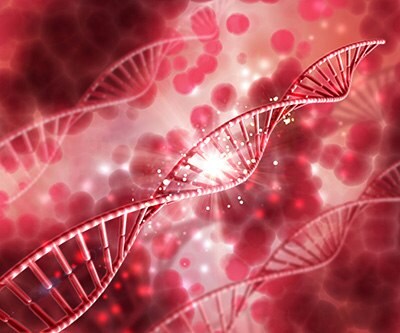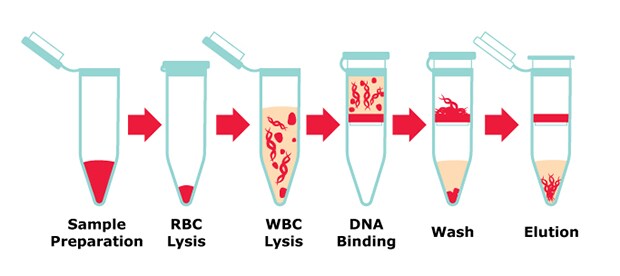How Proteinase K Can Be Used in Blood DNA Extraction Applications

DNA double helix strand in blood sample
What is the function of proteinase K in blood DNA extraction?
Proteinase K (Pro K) is an enzyme commonly used in DNA extraction protocols to degrade proteins that might interfere with downstream applications such as PCR, qPCR, or sequencing.
Proteinase K is particularly useful in removing histones that are tightly bound to DNA in the nucleus. Histones can be difficult to remove during DNA extraction, and their presence can inhibit PCR amplification or other downstream applications.
In blood DNA extraction, Proteinase K can help break down the cellular and nuclear membranes, releasing DNA from the cells.
Additionally, it can digest various proteins present in a sample, including nucleases, which degrade the DNA.
The use of Pro K in blood DNA extraction can increase the yield and purity of DNA, making it more suitable for various molecular biology techniques.

Blood is a complex biological sample that contains various components, including red and white blood cells, platelets, plasma, and DNA. The separation of DNA from blood typically involves several steps, including:
1. Lysis of red blood cells (RBCs): RBCs contain a high concentration of hemoglobin, which can interfere with downstream applications. Therefore, the first step in blood DNA extraction is to lyse the RBCs and release the nucleated white blood cells (WBCs) that contain the DNA.
2. Separation of WBCs: After the lysis of RBCs, the mixture is centrifuged to separate the WBCs from the remaining components of the blood sample, such as plasma and platelets.
3. Digestion of proteins: The WBCs contain a high concentration of proteins, which can inhibit downstream applications. To remove these proteins, a proteinase K digestion step is performed, which breaks down the proteins and releases the DNA.
4. DNA extraction: After protein digestion, DNA is extracted from the sample using a variety of methods, such as phenol-chloroform extraction, silica-based binding, or magnetic bead-based purification.
5. DNA quantification: Finally, the extracted DNA is quantified using spectrophotometry or other methods to determine its concentration and purity.
DNA extraction from blood protocol using Proteinase K
The following is a protocol that can be used to separate DNA from blood:
1. Take 2 mL of blood sample and add 10 to 20 μL of TE buffer to the sample, mix well.
2. Centrifuge the sample at 2,500 rpm for 20 minutes
3. Discard the supernatant and add 10 to 15 μL of TE buffer to the pellet and mix it gently.
4. Centrifuge the sample at 2,500 rpm for 15 minutes. Discard the supernatant and add 20 μL of proteinase K solution (commercially available ready to use) and 2 mL of DNA extraction buffer to the Falcon tube.
5. Incubate the sample at 56 ℃ to 60 ℃ for 1 to 2 hours or until the pellet dissolve properly.
6. Now add 1 to 2 mL of cold isopropanol and a small amount of NaCl to the Falcon tube and invert the tube for some time to obtain the precipitate.
7. Centrifuge the tube at 8,000 to 10,000 rpm to settle the pellet at the bottom.
8. Discard the supernatant and add 1 mL ethanol and centrifuge it at 10,000 rpm for 1 to 2 minutes.
9. Discard the ethanol and dry the pellet in the dryer.
10. Add TE buffer (pH 8.0) to the pellet and put it in a water bath at 37 ℃ for 2 to 3 hours
Other Proteinase K Information
To learn how Proteinase K is used in tissue samples, visit How Proteinase K Can be Used in Tissue Samples.
To learn different Proteinase K protocols here visit Guide on How to Use Proteinase K in Different Procedures
How do you find the best Proteinase K supplier, visit How to Determine the Best Product and Supplier for Proteinase K
How to Order Large Quantities of Proteinase K
Bulk capabilities and custom pack sizes of Proteinase K are available for your specific application. Complete the form to receive more information on what we have to offer.
Product Listings
References
To continue reading please sign in or create an account.
Don't Have An Account?